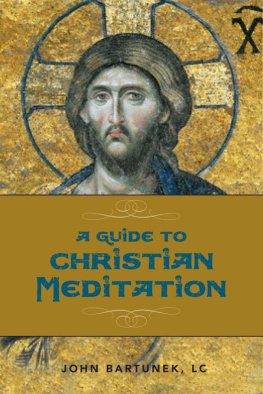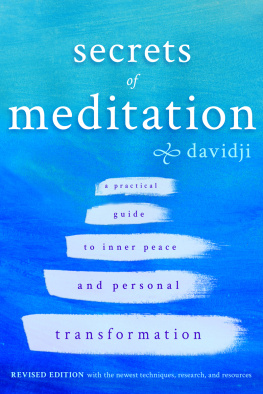Derek Cameron - The Slacker’s Guide to Stream-Entry: A Journey of Christian Meditation and Awakening to No-Self
Here you can read online Derek Cameron - The Slacker’s Guide to Stream-Entry: A Journey of Christian Meditation and Awakening to No-Self full text of the book (entire story) in english for free. Download pdf and epub, get meaning, cover and reviews about this ebook. year: 0, genre: Religion. Description of the work, (preface) as well as reviews are available. Best literature library LitArk.com created for fans of good reading and offers a wide selection of genres:
Romance novel
Science fiction
Adventure
Detective
Science
History
Home and family
Prose
Art
Politics
Computer
Non-fiction
Religion
Business
Children
Humor
Choose a favorite category and find really read worthwhile books. Enjoy immersion in the world of imagination, feel the emotions of the characters or learn something new for yourself, make an fascinating discovery.
- Book:The Slacker’s Guide to Stream-Entry: A Journey of Christian Meditation and Awakening to No-Self
- Author:
- Genre:
- Year:0
- Rating:3 / 5
- Favourites:Add to favourites
- Your mark:
- 60
- 1
- 2
- 3
- 4
- 5
The Slacker’s Guide to Stream-Entry: A Journey of Christian Meditation and Awakening to No-Self: summary, description and annotation
We offer to read an annotation, description, summary or preface (depends on what the author of the book "The Slacker’s Guide to Stream-Entry: A Journey of Christian Meditation and Awakening to No-Self" wrote himself). If you haven't found the necessary information about the book — write in the comments, we will try to find it.
Derek Cameron: author's other books
Who wrote The Slacker’s Guide to Stream-Entry: A Journey of Christian Meditation and Awakening to No-Self? Find out the surname, the name of the author of the book and a list of all author's works by series.
The Slacker’s Guide to Stream-Entry: A Journey of Christian Meditation and Awakening to No-Self — read online for free the complete book (whole text) full work
Below is the text of the book, divided by pages. System saving the place of the last page read, allows you to conveniently read the book "The Slacker’s Guide to Stream-Entry: A Journey of Christian Meditation and Awakening to No-Self" online for free, without having to search again every time where you left off. Put a bookmark, and you can go to the page where you finished reading at any time.
Font size:
Interval:
Bookmark:
The Slackers Guide to Stream-Entry
A Journey of Christian Meditation and Awakening to No-Self
Derek Cameron
Copyright 2015 Derek Cameron
I was on a ferry from Vancouver to Victoria. Rackloads of brochures alerted the visitor to the many attractions on offer in Victoria. Absent from them was any mention of afternoon tea at the Empress Hotel. This was a ritual too well-known to need any advertising. Indeed, a glance at the brochures, with their Royal London this and Ye Olde English that, gave the impression that Victoria had forever been a city of tea-drinkers from the motherland. In fact, in its early history, the city was a whole lot rougher than its genteel image suggests.
Victorias reason for being was an influx of Americans several hundred miles to the south. After the Treaty of 1818, the region the British called the Columbia Department, and the Americans called the Oregon Country, was jointly administered by both the British and the Americans. The chief British presence was the Hudsons Bay Company trading post at Fort Vancouver on the mouth of the Columbia River.
Sir George Simpson, governor of the Hudsons Bay Company, predicted that this odd arrangement could not possibly last. He identified three problems. First, the Columbia River was not the best place for a port, since ocean-going vessels would founder in its shallow waters. Second, he doubted that London would be willing to defend its claims in this remote region. And third, Americans were now pouring into the Oregon Territory by the wagon load, tempted by cheap land grants from their federal government.
On one of his supervisory voyages up the Pacific coast on the Beaver , Governor Simpson noticed the southern tip of Vancouver Island. He thought this unexplored place attractive and referred to it as an Elysium. Given that he wanted to establish a position north of Fort Vancouver, he sent his Chief Factor, James Douglas, to build a new fort on Vancouver Island. In spring 1843, Douglas arrived to construct the fort, securely inside British territory. James Douglas, too, liked the look of the place. He called it a perfect Eden.
The summer of 1843 was a good one. Though Douglass work party was poorly equipped, construction went well. By the end of the year, the new fort was complete. It was named after the young Queen Victoria.
Sir George Simpsons prediction proved prescient. Three years later, in the Oregon Treaty of 1846, the British surrendered the territory south of the 49th parallel to exclusive American control.
Fort Victoria rapidly became a center for trade. At first, the principal merchandise was fur. But beaver hats were going out of fashion in England. Salmon, potatoes, cranberries, and timber became the goods traded. Visiting Royal Navy ships needed supplies, and enterprising traders began to fish and farm to provision them. A sawmill exported finished lumber to San Francisco as early as 1849.
The British settlement of Fort Victoria developed into a self-conscious effort to form a colony. Farm land was sold for a pound an acre. For every hundred acres, the purchaser was required to bring with him five men, or three married couples, to work the land. Small and affordable city lots were laid out for laborers, with larger and pricier suburban lots for the middle classes.
To be a colonist at that time required a serious commitment. With no Panama Canal, and no overland route across the continent, it took six months to get to Victoria from England on a Hudsons Bay Company ship.
By 1858, Victoria had become a village of some 300 people. Its industries included not only fishing, farming, and lumber production, but also mining.
What changed this picture were the rumors reaching California that gold had been found in the British territories north of the 49th parallel. One Sunday morning, astonished Victorians saw the Commodore pull into the harbor carrying 450 men armed with spades and wash-pans the same tools as had been used in the California gold rush nine years earlier. But this was only the beginning. After the Commodore, some 25,000 prospectors were to pass through Victoria harbor.
This horde of humanity overwhelmed the village. Bakers ran out bread. With no accommodation for such large numbers, tent cities sprang up. Demand for building lots was so great that people wanted to buy them faster than surveyors could lay them out. When lots did become available, purchasers began lining up outside the land office at 4 a.m. A ships carpenter, who a few years earlier had bought a property for forty pounds, was able to lease it out for four thousand pounds a year.
Most of the 25,000 moved on to the gold fields, but many returned to Victoria for the winter. Over a thousand settled permanently to start businesses. The little village suddenly sported two hundred brand-new stores. Victoria had become a city.
Gold there certainly was. In the summer of 1858, half a million dollars worth was shipped from Victoria. This was double the quantity produced in a similar period in California in 1849. News of the early finds prompted even more fortune-seekers to arrive. The steamship company tripled the maximum passenger load on its vessels. Wells Fargo opened a financial office. Two newspapers were established The Victoria Gazette and The British Colonist .
In 1862, the former village officially incorporated as the City of Victoria. Along with government buildings and stores, it now had its own theatre, four newspapers, and an enormous number of drinking establishments.
But the gold rush and its attendant prosperity did not last. Government income from land sales dried up. The administrations of both Vancouver Island and the mainland colony of British Columbia became indebted. In 1866, the two colonies merged to reduce their costs. Though the capital of the combined colony was briefly at New Westminster on the mainland, in 1868 Victoria which in any case was the center of commerce was designated the official capital of the combined colonies.
Secondary industries began to develop, including iron works and even shipbuilding. In this working city, where men vastly outnumbered women, brewing and prostitution were profitable activities. The major crime was public drunkenness, and the chief cause of admission to the local hospital was venereal disease.
Victoria remained British Columbias largest city until it was overtaken by the upstart Vancouver in 1901. The relocation of trade to the mainland left Victoria wondering what to do with itself. It decided, among other things, to reinvent itself as a tourist destination. To this end, the Empress Hotel opened its doors in 1908. At the same time, well-to-do retirees began to move here from chillier parts of Canada. At last, Victoria could boast a class of leisured gentlefolk who took their afternoon tea at the Empress Hotel.
In the ferrys forward lounge hung a portrait of Her Majesty. When I went up on deck, I half-expected to see the Red Ensign. In fact, the ship flew the flag of British Columbia. Introduced in 1960, it featured the Union Flag over a Pacific sunset. Some early prototypes had these elements reversed, but this idea had to be discarded, implying as it did that the sun might one day set on the British Empire.
After disembarking the ferry, I drove the twenty miles to downtown Victoria, then out along McKenzie Avenue. The buildings of Queenswood retreat center, like those of the nearby university, dated from the 1960s. But Queenswoods roots went much, much further back into the early days of Fort Victoria.
The officers of the Hudsons Bay Company were largely Scots, but its employees were French-Canadian Catholics. In 1847, four years after the establishment of Fort Victoria, a new Catholic diocese was carved out from the Oregon Territory. Its first bishop was a priest from Quebec named Modeste Demers.
Next pageFont size:
Interval:
Bookmark:
Similar books «The Slacker’s Guide to Stream-Entry: A Journey of Christian Meditation and Awakening to No-Self»
Look at similar books to The Slacker’s Guide to Stream-Entry: A Journey of Christian Meditation and Awakening to No-Self. We have selected literature similar in name and meaning in the hope of providing readers with more options to find new, interesting, not yet read works.
Discussion, reviews of the book The Slacker’s Guide to Stream-Entry: A Journey of Christian Meditation and Awakening to No-Self and just readers' own opinions. Leave your comments, write what you think about the work, its meaning or the main characters. Specify what exactly you liked and what you didn't like, and why you think so.












